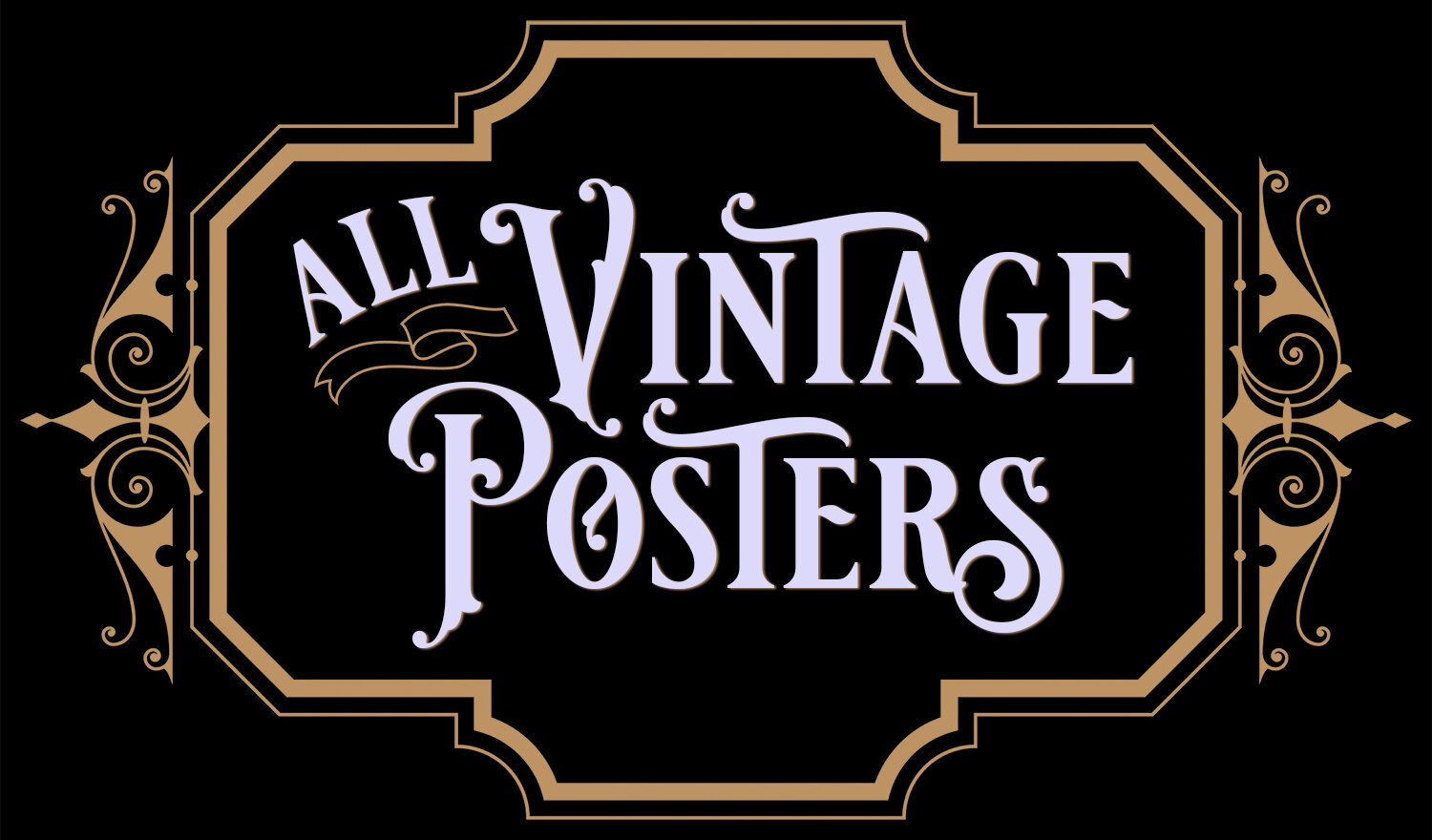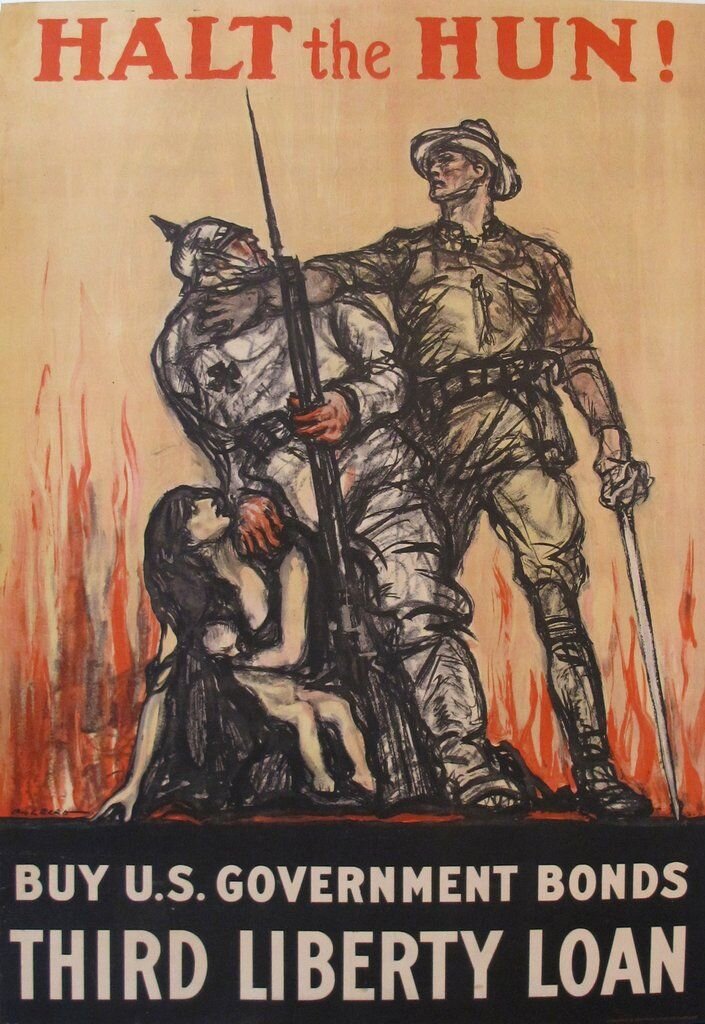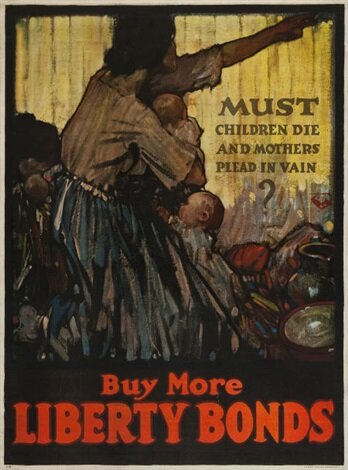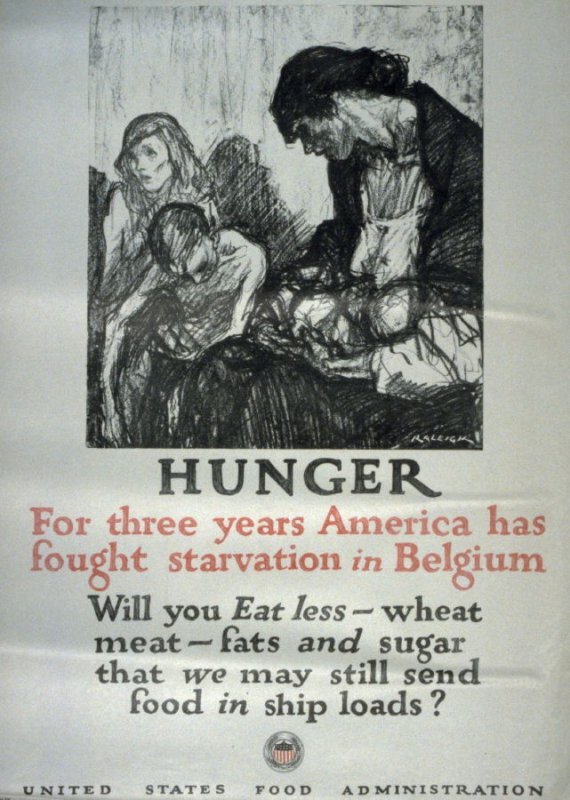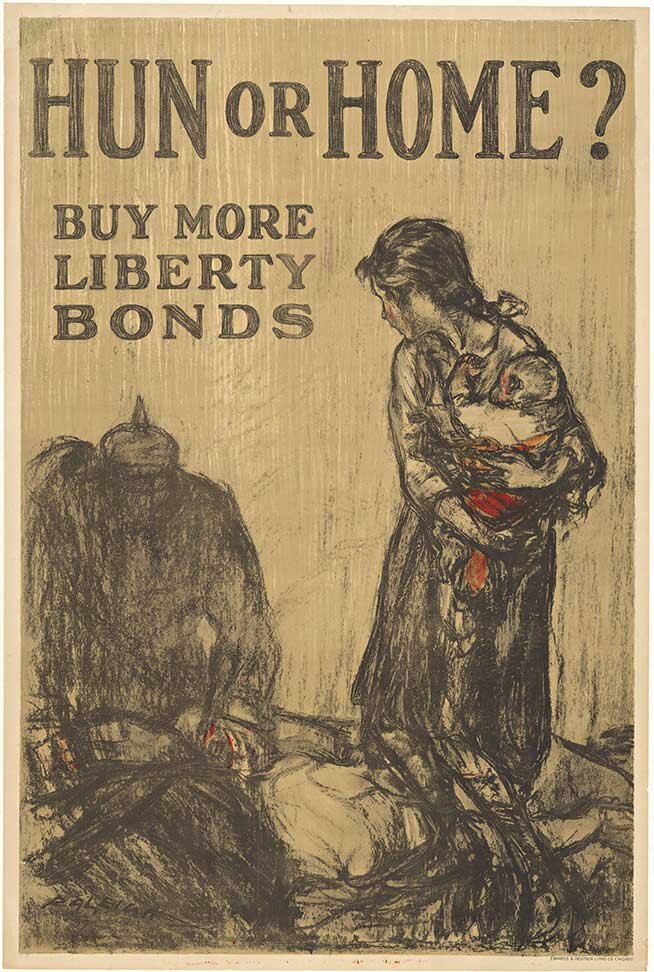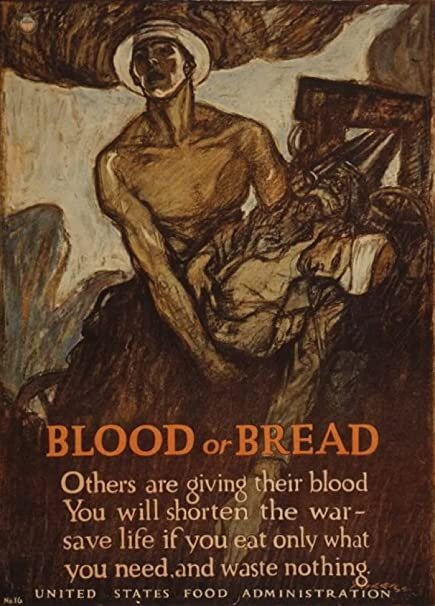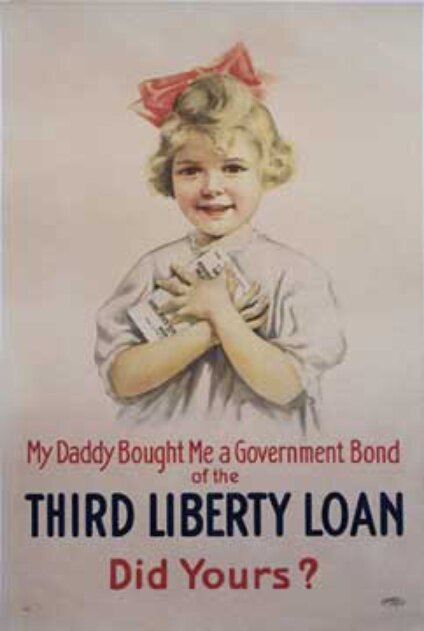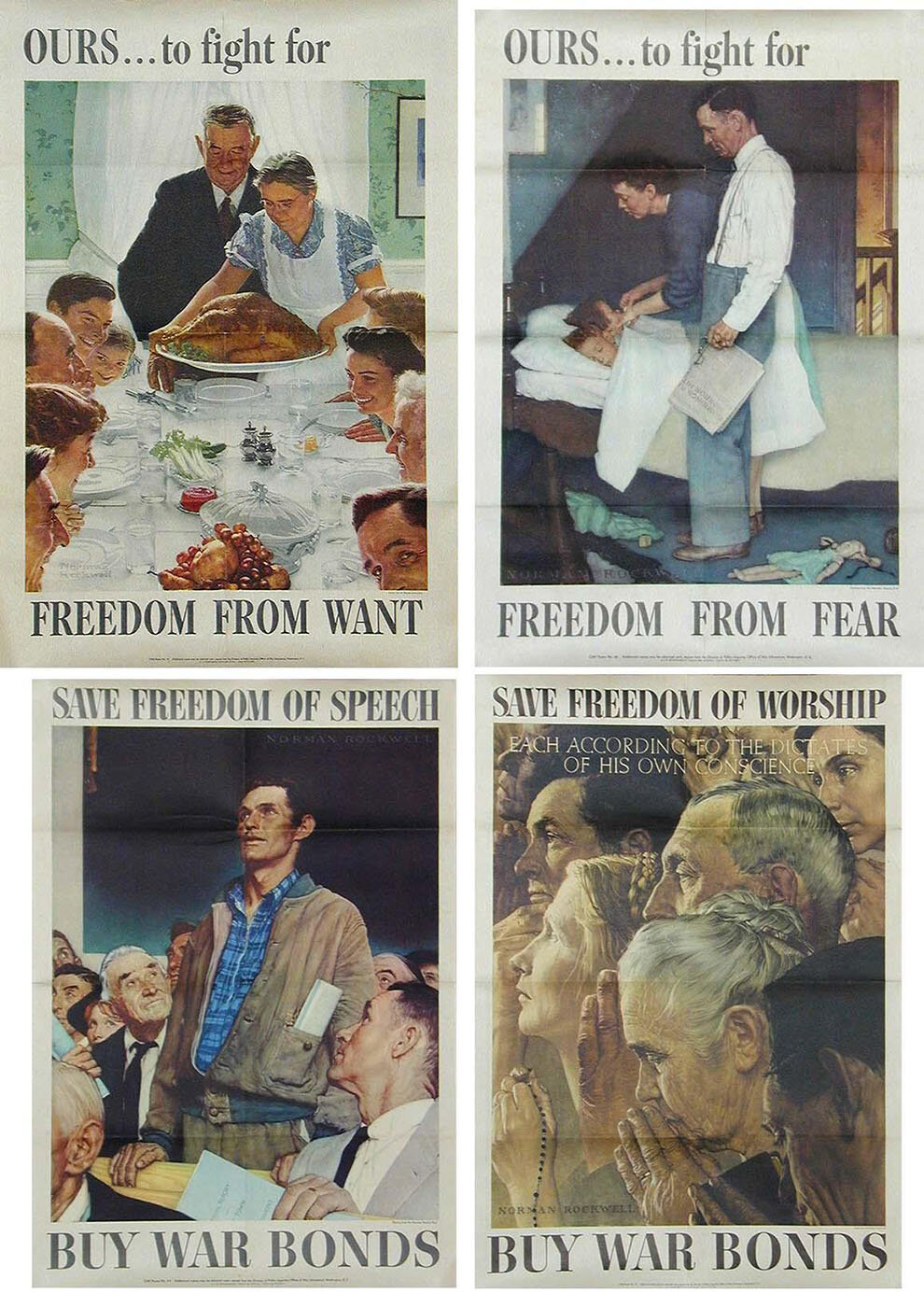Collecting War Posters
War time posters are a great blend of practicality with art. They had a real practical purpose - convey the government message to the public, but they didn’t just dash off a quick and amateur job. It was important that the message really resonate with the viewers. Some are completely text based, but most are a combination of image with text. They hired skilled artists to utilize all their talents of conveying messages through visual elements with an artist’s hand. There were hundreds of designs and every country made them.
Remember and Invest, Lithograph, 1919
Artist: James Monroe Hewlett
Probably the most iconic wartime poster is the Uncle Sam recruitment poster. The poster features Uncle Sam in a top hat, sternly pointing out at the viewer with the famous I Want You for the U.S Army tagline. Poster artist James Montgomery Flagg created this design in 1917, and it is now one of the most reproduced images in history. Flagg, a colourful personality and prolific artist, produced 46 posters for the DPP, (Division Of Pictorial Publicity). You can read more about the illustrious illustrator here. An original poster should measure 30 by 40.5 inches, but it was made in other slightly different dimensions as well. The government reprinted this design many times in the twentieth century, so you may see it in slightly different sizes and sometimes they slightly changed the background colour. Image Source: Library of Congress
I Want You For U.S. Army, 1917
By James Montgomery Flagg
My favourite war poster artist is Howard Chandler Christy. He designed a lot of well known posters, like the I Want You For The Navy, Clear The Way, Americans All!, Fight or Buy Bonds and Gee I Wish I Were A Man I’d Join The Navy and many more. His painterly illustrations are as beautiful as any great master’s work.
I’m also a big fan of Henry Patrick Raleigh’s beefy gestural sketching style. He did the posters Hunger, Blood Or Bread, Halt The Hun, Hun Or Home and Buy More Liberty Bonds, among others. I think his compositions of menacing figures and women with children harken back to renaissance art. The thick, charcoal lines lend an aura of depression and doom to his war poster illustrations that his peace time artwork does not have. In fact, his work usually had a delicate light and sensibility. Hunger is available for purchase.
The quintessential American artist, Norman Rockwell, also created some very well-known war posters. You have probably seen his much reproduced 1943 Four Freedoms poster. This series of four posters were created as illustrations for the Saturday Evening Post magazine. Inspired by President Roosevelt’s speech espousing four basic human freedoms: freedom of speech and expression; freedom of worship; freedom from want; and freedom from fear, Rockwell put a lot of thought into his assignment, and is quoted as saying he hoped his series would serve a purpose bigger than a poster. (Info from fdrfourfreedomspark)
My favourite Norman Rockwell war poster is Let’s Give Him Enough, And On Time. I have been fortunate enough to have linenbacked an original of this poster for a client, and the artwork in this poster really resonates with me.
Let’s Give Him Enough And On Time WW2 poster
By Norman Rockwell, 1942
Another interesting thing about war posters is that the quality of the paper went down as the paper resources became scarce. For example, in France during WW2 almost all the movie posters were reused in the war effort so today it is rare to find movie posters of films from that time. There were paper shortages during WW2 and virtually no French posters survived from before, during and right after WW2. (Info from emovieposter.com).
